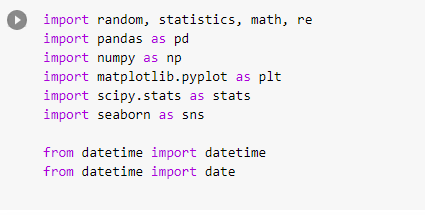1. Stay on top of performance
No good waiting until the quarter is gone. I use weekly reporting and monthly a management accounts to track performance vs plan inside the quarter.
If something comes off, I’m onto my Business Unit CFO to ensure there’s a recovery plan.
I’m tracking yoy sales, yoy EBITDA, & free cash generation in absolute.
If something falters I’ll keep digging (through monthly management reviews) to ensure we understand the root issue and got the right plan.
Ensure accountability is in right place, and monitor relentlessly
Sounds easy, but the art is creating the right organisational tension in the right place to make the right people jump at the right time.
And accordingly fix the root problem…
This is important because if the numbers are shit, it’s important that I’m able to explain what we are doing about it.
AND even more importantly, to already be doing it by the time the call comes round.
2. A clean close
Every CFOs worst nightmare. Going back to the market and telling them you got the numbers wrong.
I’ve had literal nightmares about this 😂😎
It’s never happened to me (touch wood). So going above and beyond to make sure the quarter is clean is a must.
Having a really robust accounting function who can rep their share of the balance sheet is crucial here.
I’ll review with all of my BU CFOs.
I’ll use my internal audit function if Im ever worried about integrity (can be an issue early in a new CFO role).
And the audit committee is there to keep me honest of course.
Reporting integrity cannot be compromised.
3. Establish the fact base
Now the books are clean and closed we now finalise the key reporting KPIs
- LFL Revenue growth (volume, mix, price split)
- EBITDA and EBIT margins
- Working cap
- Free cash Flow 😍
- Net Debt and Leverage
- Any relevant ops KPIs
My accounting function then build this into a skeleton deck in the format of the charts and tables in the deck the investors are used to.
This helps with immersion in how the release will be received
4. Build the story
From there myself, CEO and IRD spend a couple of hours together to work out what the narrative is for the quarter.
What do we want to say? Are we able to say it? How do we bring it together in a way that is lucid, and consistent.
Pro tip; I think of each call like an episode of a tv show.
We need to make sure that the narrative flows from one episode to the next.
It can take unexpected twists and turns, that’s normal, but it needs explaining very clearly.
We then make sure the deck clearly reflects that narrative and introduce any guest slides / charts and commentary.
Lots of finetuning to get it right.
Making sure that the narrative is consistent with the published strategy (or well explained if not) is also important.
5. Prep like hell
Once the published material is locked down (normally 7 days before call), I get into deep prep.
Prepping the script, prepping the faq, evaluating every angle of challenge. I’ll spend 2-3 solid days doing this in the week before a call.
6. Day of the call
The releases go out to the market first thing. And the analyst call is normally later that day.
My IRD will be working overtime to gauge market reaction and question themes.
A good IRD will know the questions that are coming before they are asked
We have a script run through ahead of the call, which helps make sure the written script scans out loud.
This is followed with a few of the team firing some questions at the CEO and myself. This helps gets us on our toes
If the above is done properly, the call itself is straight forward.
It’s just a case of executing against the prep.
Making sure you don’t give any rooms for bears to push a thesis after the call is important.
So tying up loose ends from the Q&A is important
7. Debrief
This is really important.
What commitments have we made to our investors?
How do we take this back to the organisation to make sure our management teams feel the same accountability for delivery we do.
Then we are back to step 1!
TLDR
CFO Earnings Call Prep:
1. Drive Performance
2. Clean Close
3. Establish Facts
4. Build the story
5. Prep hard
6. Deliver call
7. Debrief
Rinse and repeat.
Follow
@SecretCFO for more





